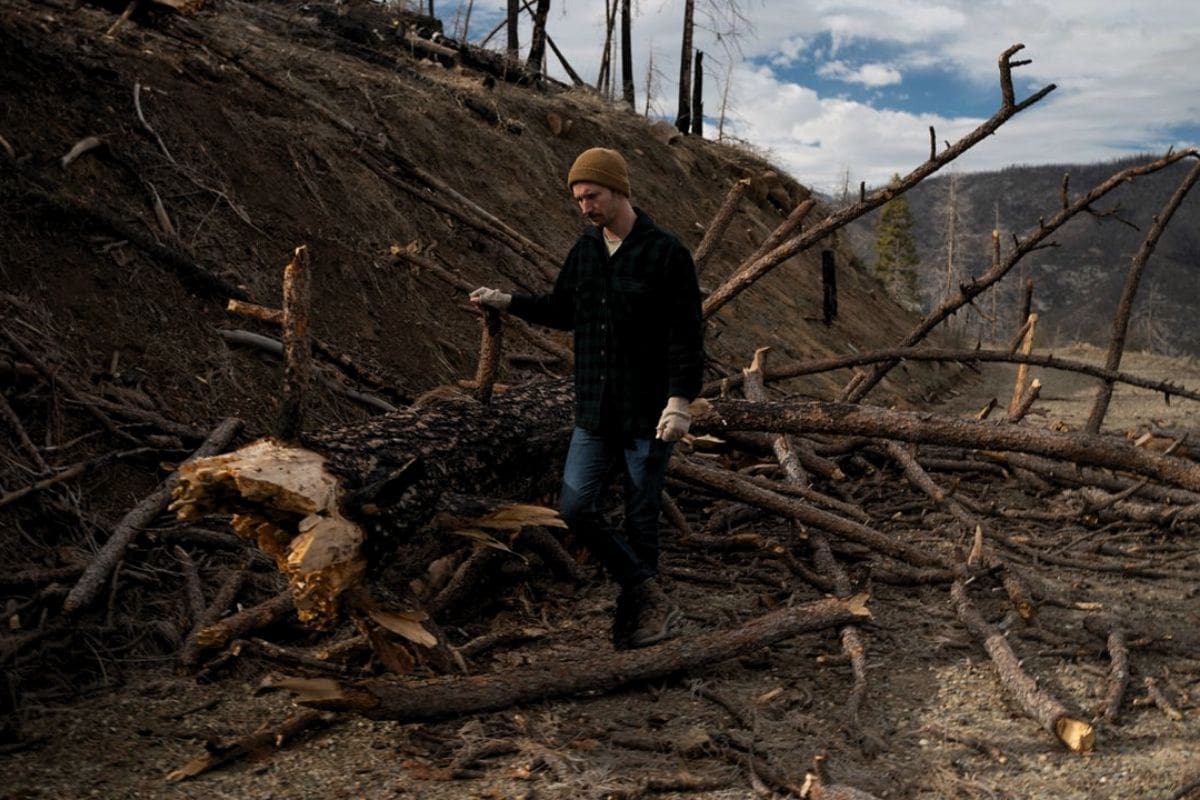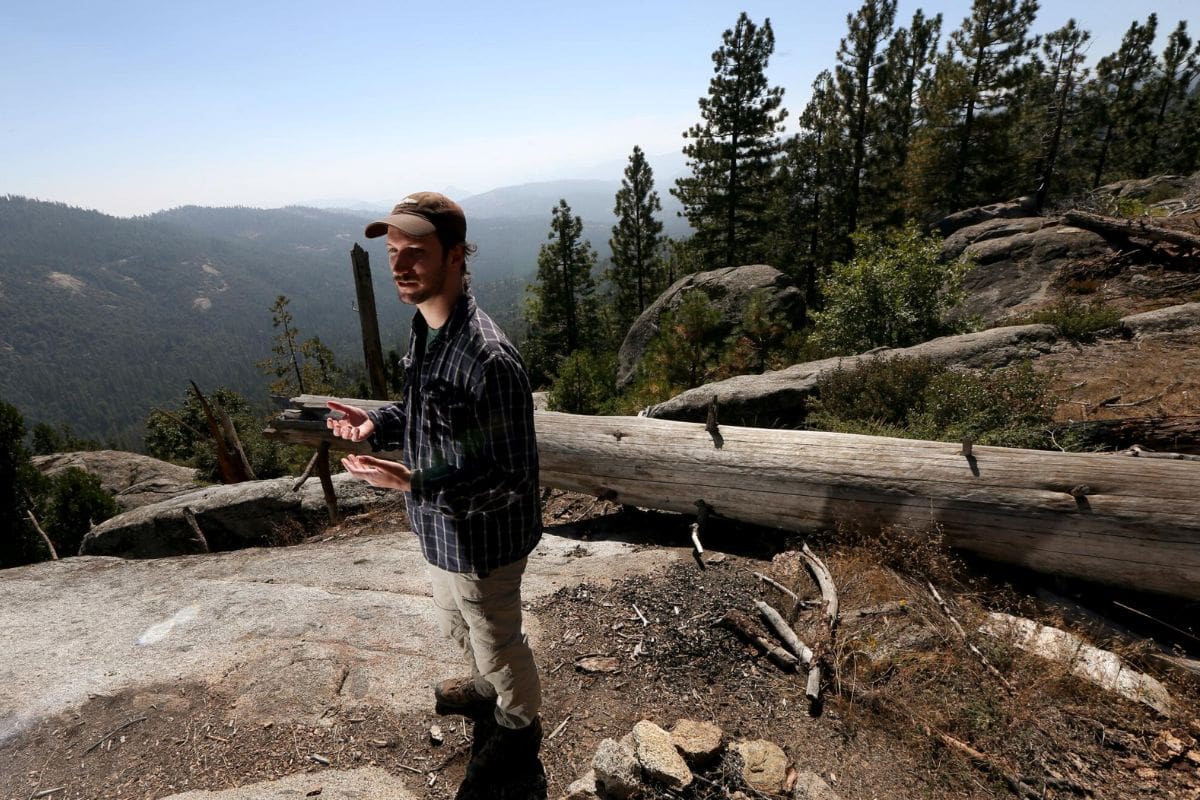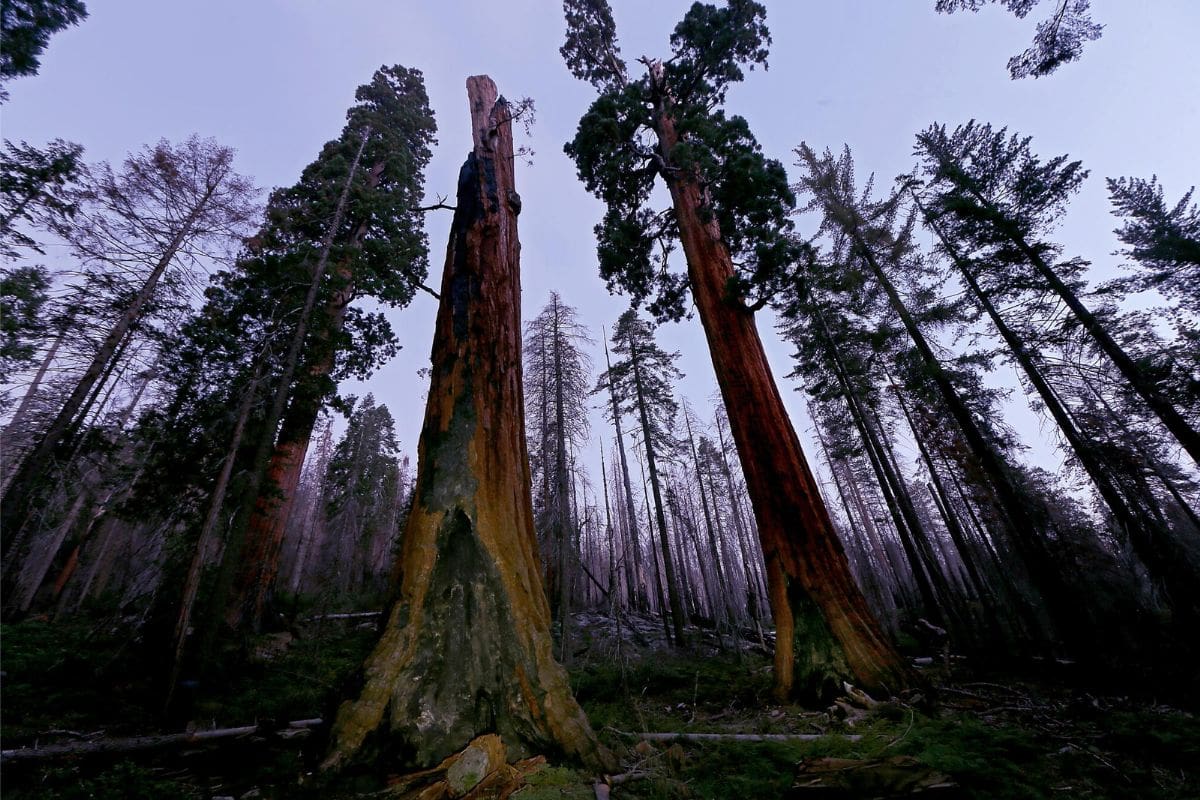The Zombie Effect of Climate Change: Imagine walking through a once thriving California forest, its towering trees stretching towards the sky like guardians of nature’s beauty.
But as you wander deeper into the woods, you notice something eerie. The trees, once vibrant and green, now stand lifeless and gray, their branches contorted like the limbs of zombies.
This haunting scene is not a work of fiction, but a chilling reality caused by the devastating effects of climate change on California’s forests.
In the following discussion, we will explore the emergence of these ‘zombie forests’ and the alarming impact they have on ecosystems, wildlife, and local communities.
But fear not, for amidst the darkness, there is hope as we uncover potential solutions and look towards the future.
Key Takeaways
- Approximately 20% of Sierra Nevada’s conifer forests are no longer thriving, with iconic species like Jeffrey pine and Douglas fir struggling for survival.
- Shifting environmental conditions have led to the rise of ‘zombie forests’, where some conifers are still standing but referred to as ‘standing dead’ due to the inability to keep up with the pace of change.
- The decline of conifer forests not only threatens the survival of various species like spotted owls and pine martens but also exacerbates threats to ecosystems and wildlife due to the shift to chaparral shrubland, which is prone to higher-intensity fires.
- The impact of severe environmental conditions on communities in California is evident, with tangible effects on the landscape, such as loss of trees due to bark beetle infestations, and potential implications on property values and livability.

Climate Change Impact on Sierra Nevada’s Conifer Forests
Climate change is significantly impacting the conifer forests of the Sierra Nevada, with approximately 20% of these iconic forests no longer able to thrive in the region’s changing environmental conditions. Avery Hill, the lead author, emphasizes the challenges faced by iconic conifer species like the Jeffrey pine and Douglas fir, highlighting their struggle for survival under rapidly changing conditions.
These forests, once abundant and vibrant, are now facing a dire situation. The rising temperatures, prolonged droughts, and increased frequency of wildfires brought about by climate change are wreaking havoc on their delicate ecosystems. The Jeffrey pine, known for its beautiful golden bark and sweet vanilla scent, is particularly vulnerable. Its seeds require specific temperature and moisture conditions to germinate, conditions that are becoming increasingly scarce due to climate change.
Similarly, the Douglas fir, a towering giant that dominates the Sierra Nevada landscape, is also under threat. Its shallow root system makes it susceptible to drought, and as the region experiences longer and more severe droughts, these majestic trees struggle to find the water they need to survive.
The impact of climate change on these conifer forests isn’t only a loss for biodiversity but also for the communities and industries that rely on them. These forests provide habitat for countless species, protect watersheds, and support the local economy through tourism and timber production. The loss of these forests not only affects the natural balance but also has far-reaching consequences for human well-being.
It is crucial that we address the challenges posed by climate change to protect and restore these iconic forests. Efforts to reduce greenhouse gas emissions, promote sustainable forest management practices, and restore degraded areas are necessary to ensure the long-term survival of these valuable ecosystems. Only by taking action can we hope to preserve the beauty and ecological significance of the conifer forests in the Sierra Nevada for future generations to enjoy.
Shifting Environmental Conditions and the Rise of ‘Zombie Forests
As environmental conditions shift in the Sierra Nevada, a disturbing trend emerges – the rise of ‘zombie forests’ that stand as haunting reminders of the challenges faced by conifer species in the face of climate change. Computer modeling reveals that conifers in the Sierra Nevadas have struggled to keep up with the pace of environmental change over the past century. Despite some conifers still standing, Hill refers to them as the ‘standing dead,’ predicting their eventual disappearance. Ideal conifer conditions have shifted significantly up-slope, while the current climate in the region has become too warm and dry to support conifer forests for extended periods.
| Shifted Ideal Conifer Conditions | Current Climate in the Region |
|---|---|
| Shifted significantly up-slope | Too warm and dry |
Threats to Ecosystems and Wildlife
The decline of conifer forests in the Sierra Nevada not only threatens the survival of various species dependent on this habitat, but also increases the risk of catastrophic wildfires in the region.
Species such as spotted owls and pine martens, which rely on conifer forests for their survival, now face the difficult choice of adapting, moving, or facing extinction. These forests provide essential resources and shelter for a diverse range of wildlife, and their decline puts these species at great risk.
Additionally, the shift to chaparral shrubland, which is happening as a result of climate change, further exacerbates the threats to ecosystems and wildlife. Chaparral areas are prone to higher-intensity fires compared to conifer forests, which puts both the vegetation and the animals that depend on it in danger.
It’s crucial to understand and address these threats in order to protect California’s ecosystems and the wildlife that call them home.

Also Read: California Connect A Free Health and Resource Fair for All
Local Impact on Communities and Real Estate
Communities in California are directly experiencing the impact of severe environmental conditions on their forests.
Take, for example, Shaver Lake, where residents are witnessing firsthand the tangible effects of these conditions. Kimberly Hogue, a local real estate agent, has expressed her concerns about how the changing landscape is affecting the area’s appeal.
Despite the massive loss of trees due to bark beetle infestations, people continue to visit and even relocate to Shaver Lake. The allure of the area, with its stunning natural beauty and recreational opportunities, still holds strong for many.
However, the long-term implications of climate change on real estate in these communities remain uncertain. As environmental conditions persist and worsen, it’s vital for residents and potential buyers to consider the potential impact on property values and the overall livability of these areas.
Solutions and Future Outlook
To address the challenges posed by climate change and ensure the future health of California’s forests, proactive solutions and a forward-thinking approach are crucial. Here are some potential solutions and future outlooks to consider:
- Implement prescribed burns: This strategy can improve forest health and protect against devastating fires.
- Focus on understanding large-scale vegetation transitions: By studying these transitions, we can better comprehend the impacts of climate change on ecosystems and develop appropriate conservation strategies.
- Increase efforts to protect compromised ecosystems: It’s important for humans to actively work towards safeguarding forests that have been affected by climate change.
- Support research and innovation: Investing in research and innovation can lead to the development of new technologies and strategies to mitigate the effects of climate change on forests.
- Foster collaboration and community involvement: Building partnerships and involving local communities in forest conservation efforts can lead to more effective and sustainable solutions.
Conclusion Of The Zombie Effect of Climate Change
The impact of climate change on California’s forests is alarming. Shifting environmental conditions have led to the rise of ‘zombie forests’, posing threats to ecosystems and wildlife. These changes also have local implications, affecting communities and real estate.
However, there’s hope for the future. By implementing solutions such as sustainable forest management and reducing greenhouse gas emissions, we can mitigate the zombie effect of climate change and protect the beauty and biodiversity of California’s forests for generations to come.
Our Reader’s Queries
How has California been affected by climate change?
California stands as one of the leading states grappling with economic repercussions stemming from climate-related disasters. The report delineates the impact of climate change, intertwining issues such as food shortages, floods, droughts, wildfires, pollution, and disease on the state’s economic landscape.
Is climate change turning swaths of California’s mountains into zombie forests?
Researchers at Stanford University posit that under the prevailing conditions, conifers face an uncertain future. A recent study by the university reveals that approximately 20% of conifer forests in the Sierra are ill-suited for the warmer climate, transforming into what researchers term as “zombie forests.
What is the biggest danger to California from climate change?
California confronts five primary climate hazards in the face of changing environmental conditions: (1) elevated temperatures and occurrences of extreme heat events, (2) intensified wildfires with increased severity, (3) heightened frequency and intensity of droughts, (4) flooding resulting from extreme precipitation events, and (5) coastal flooding and erosion stemming from rising sea levels.

